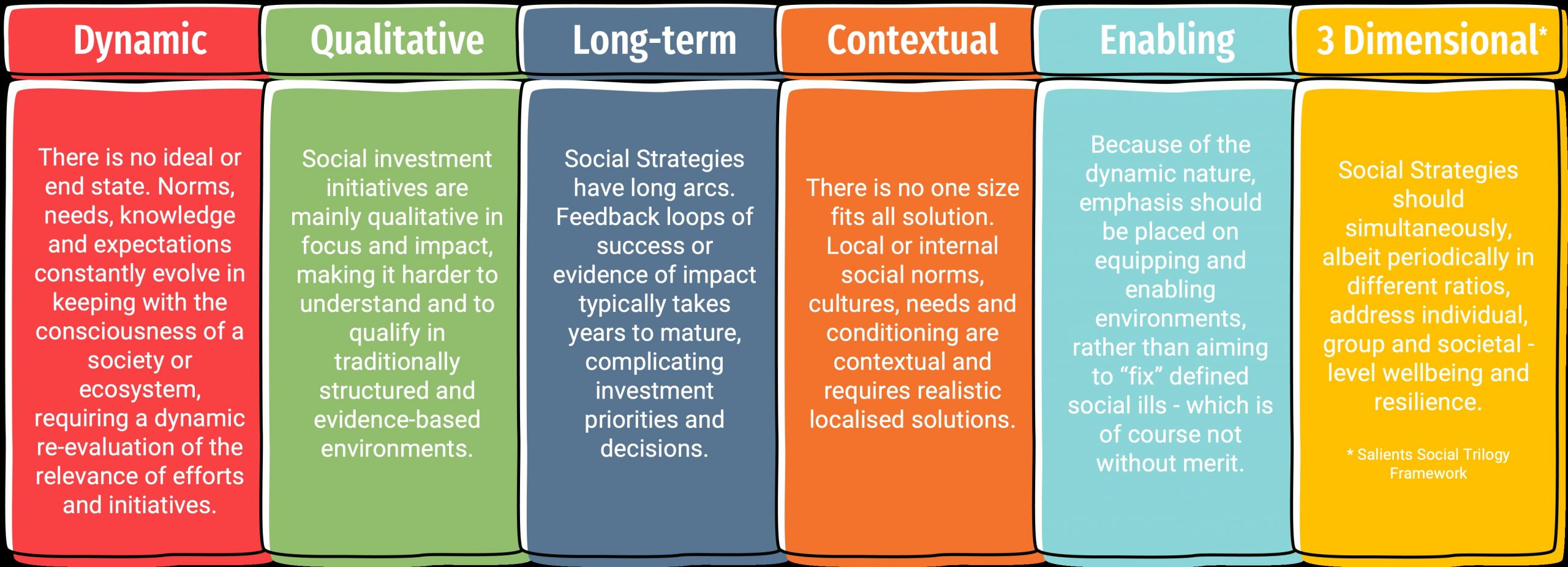Written by Retha van der Schyf
Focusing on the S
Much is being written about the increasing “must” of ESG. Even more on the need for the Private Sector to do more – by investors, the Public Sector, through to consumers.
Unfortunately, too few stand still to first reasonably explore what each element actually means, what the true intent is, how it can practically be embedded and what great looks like. Almost no one is taking proper stock of the increasing value and opportunity, but also the complexity of the S – the Social element.
Despite being way ahead of the curve on Social Responsibility for decades, even the mining sector is faced with the challenge that more can and should be done. So where is the disconnect?
Begin by Asking the Right Questions
One critical recommendation is to change the questions being asked. Another is to replace judgement with curiosity in this debate. Rather than pointing fingers and trading expectations on the need for “more”, should we not instead first open-mindedly explore:
These are exciting and nuanced questions that will be addressed in a spotlight series of publications on the S in ESG. In this first article we want to stand still on the foundational question of what sits at the heart of the S, the Social Element.
The Social Element involves two interacting concepts: Social Impact and Social Transformations, together referred to as Social Strategies.

Defining Social Impact
There are several definitions of Social Impact that aim to capture its breadth and depth. In its simplest form, Social Impact refers to any conscious effort to improve the wellbeing or resilience of a defined person, group or eco-system.
Defining Social Transformations
Social Transformation refers to a deliberate process to change habitual norms, cultures, values, hierarchies and behaviours over time, ideally for the better. It is the way society changes or can be changed to accommodate new needs, values, economic conditions, science, technological innovations or political upheavals. Social Transformation intentionally affects people’s interactions and familiar way of being, with the aim of betterment.
With the above defining the underlying intent of Social Strategies, the next important step is to look at the parameters that shape the mindset towards, as well as the tone and texture of these Strategies.
The 6 Principles Underpinning Social Strategies Today

In future publications we will examine how Social Strategies are evolving and why. We will also explore ground-breaking ideas on the how-to of future-facing Social Strategies and how these interact with Economic and Environmental Strategies.
For now, we invite you to re-evaluate the questions being asked in relation to ESG in general and the Social element in particular. Open-mindedly question where we place our collective focus and energy most effectively in this vast and fast-evolving critical element of our new way of doing business.
About the Author
Retha van der Schyf is a socio-economic strategist that works with private sector, CSOS and government organisations to transform economies, societies and conurbations. For more about the author, refer to:https://www.linkedin.com/in/rethavanderschyf/

